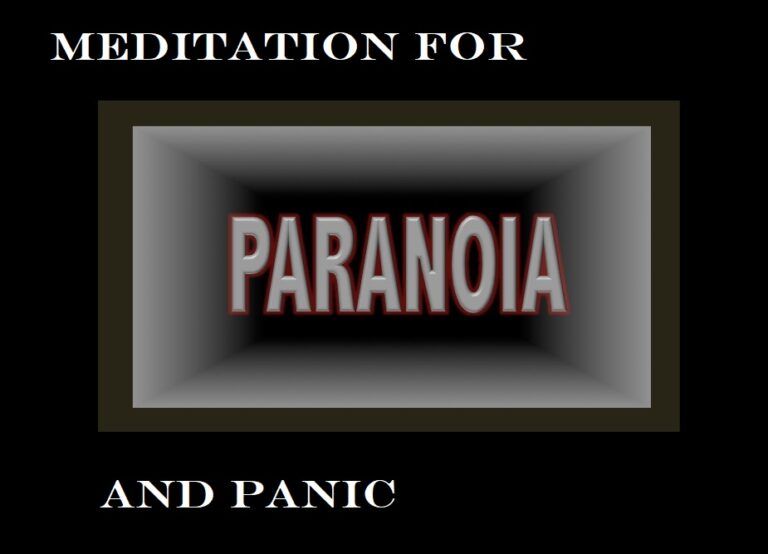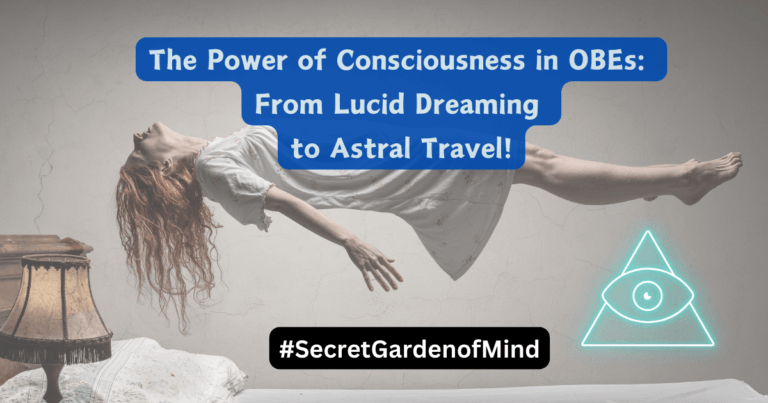Sleep Cycles and Lucid Dreaming: How Does One Affect The Other?
Sleep Cycles and Lucid Dreaming: How Does One Affect The Other? For anyone that knows about the mechanisms of the brain during sleep they will know that there are the natural stages of sleep that our bodies go through.
Each cycle consists of four stages of sleep including light sleep, deep sleep, and REM (rapid eye movement) sleep.
Understanding these sleep cycles is important for anyone interested in lucid dreaming, a phenomenon where the dreamer becomes aware that they are dreaming and may even be able to control their actions within their dreams.
In this blog post, we will explore the relationship between sleep cycles and lucid dreaming. We’ll delve into the different stages of sleep, the benefits of lucid dreaming, and how to induce lucid dreams.
We will also examine how knowledge of sleep cycles can help increase the likelihood of having a lucid dream and provide tips for maintaining lucidity during a dream. By the end of this post, you will have a better understanding of sleep cycles and lucid dreaming, as well as the tools to try inducing lucid dreams yourself.
If you would like to check out some of our other posts about Lucid Dreaming check out our links below.
- Lucid Dreams and Meditation – The Common Link
- Can You Train Your Brain To Lucid Dream? and Other FAQs
- Does Milk Help Induce Lucid Dreaming?
Now let’s get started with this blog post;
Sleep Cycles and Lucid Dreaming: How Does One Affect The Other?
pinterest pin
So first of all let’s talk about Sleep Cycles
What Are Sleep Cycles?
Understanding how sleep cycles work is crucial for anyone interested in lucid dreaming. Sleep cycles are divided into several stages, each of which serves a different function in the body.
- Light Sleep:
The first stage of sleep, also known as N1, is light sleep. During this stage, you are in a state of transition between wakefulness and sleep. You may experience muscle twitches, and your brain waves begin to slow down. This stage usually lasts for 5-10 minutes. - Deep Sleep:
The next stage, N2, is deep sleep. This stage accounts for about half of a typical night’s sleep. During this stage, your brain waves become even slower, and your body temperature drops. You are less likely to be awakened during this stage. - REM Sleep:
The final stage of the sleep cycle is REM sleep. REM stands for rapid eye movement, and this is the stage in which dreaming occurs. Your brain is highly active during this stage, and your muscles become temporarily paralyzed to prevent you from acting out your dreams. REM sleep usually occurs in cycles of around 90 minutes throughout the night.
During a typical night’s sleep, you go through several cycles of these stages, with each cycle lasting around 90-120 minutes. The length of each stage changes throughout the night, with the first cycle having a more deep sleep and less REM sleep and subsequent cycles having a less deep sleep and more REM sleep.
Understanding How Sleep Cycles Work?
Understanding how sleep cycles work is important for lucid dreaming because certain stages of the sleep cycle are more conducive to inducing lucid dreams.
For example, REM sleep is when most of our dreaming occurs, so attempting to induce lucid dreams during this stage may be more effective.
Additionally, knowing how long each cycle lasts can help you plan when to attempt lucid dreaming during the night.
What Is Lucid Dreaming
Lucid dreaming is a state of consciousness where the dreamer becomes aware that they are dreaming. It is a fascinating and unique experience because the dreamer is able to control and manipulate their dream environment.
Lucid dreaming is different from regular dreaming because the dreamer is aware that they are in a dream, and they can or cqan often direct the course of the dream or alter the dream environment.
There are many benefits to lucid dreaming. For example, it can be used to overcome nightmares or to face and conquer fears in a safe, controlled environment.
Additionally, it can be a source of creative inspiration, problem-solving, and personal insight.
Inducing a Lucid Dream Experience
There are many techniques for inducing lucid dreams. Not all of them work for everyone but they certainly can be tested.
One common technique is called reality testing, where you repeatedly check whether you are awake or dreaming throughout the day. If you make this a habit, it may carry over into your dreams, and you will become aware that you are dreaming.
Another technique is called wake-induced lucid dreaming, where you wake up after a few hours of sleep and then go back to sleep with the intention of having a lucid dream.
During this time, you may use relaxation or visualization techniques to help induce lucid dream.
There are also various supplements, such as Galantamine and Choline, that some people use to induce lucid dreaming. However, it is important to note that the safety and effectiveness of these supplements are not fully understood, and they should be used with caution.
>>>See My Recommended Sleep Supplement Here<<
Overall, inducing lucid dreaming requires practice and patience, but it can be a rewarding and exciting experience.
Further Connections Between Sleep Cycles and Lucid Dreaming
Understanding sleep cycles can be helpful in inducing and maintaining lucid dreams. Here are some tips on how to use this knowledge to increase the likelihood of having a lucid dream and maintaining lucidity throughout the dream:
- Timing:
Lucid dreaming is more likely to occur during the REM stage of sleep. To increase your chances of having a lucid dream, it is recommended that you attempt to induce lucidity during the later cycles of the night when REM sleep is more frequent. - MILD Technique:
The MILD (Mnemonic Induction of Lucid Dreams) technique is a method of inducing lucid dreams that involves setting an intention to become lucid while you are falling asleep. This technique is often used during the early morning hours, when you are more likely to be in REM sleep. - WBTB Technique:
The Wake-Back-to-Bed (WBTB) technique involves waking up in the middle of the night, staying awake for a short period of time, and then going back to sleep with the intention of having a lucid dream. This technique can be effective because it increases the likelihood of entering REM sleep and allows for greater dream recall. - Reality Checks:
Performing reality checks throughout the day can help increase your chances of having a lucid dream. During a dream, reality checks can help you determine if you are dreaming or not. Common reality checks include looking at your hands, trying to breathe through a closed nose, or attempting to push your finger through your palm. - Stabilization Techniques:
Once you become lucid in a dream, it is important to maintain that lucidity for as long as possible. Some techniques that can help stabilize your lucidity include spinning around in the dream, touching and feeling objects in the dream, or rubbing your hands together.
In summary, understanding sleep cycles and their connection to lucid dreaming can help you increase the likelihood of having a lucid dream and maintaining lucidity throughout the dream.
By using the techniques and tips outlined above, you can begin to explore the fascinating world of lucid dreaming and experience its many benefits.
In Conclusion
On a final note, understanding sleep cycles and their connection to lucid dreaming is crucial in inducing and maintaining lucid dreams. By timing your attempts to induce lucidity during the later stages of the sleep cycle when REM sleep is more frequent, using techniques such as MILD and WBTB, performing reality checks, and stabilizing your lucidity during a dream, you can increase your chances of having a lucid dream and experiencing its many benefits.
We encourage readers to try inducing lucid dreams themselves, as it can be a rewarding and exciting experience. There are many resources available online and in books that can help you further explore and learn more about lucid dreaming.
Some recommended resources for further reading include;
- “Exploring the World of Lucid Dreaming” by Stephen LaBerge and Howard Rheingold,
- “The Lucid Dreaming Workbook: A Step-by-Step Guide to Mastering Your Dream Life” by Andrew Holecek,
- and the websites luciddreaming.com and HowToLucid.com
FAQs
- What are the stages of sleep and how long do they last?
There are four stages of sleep, with REM (Rapid Eye Movement) sleep being the most important for lucid dreaming. The first three stages are categorized as non-REM sleep and are characterized by progressively deeper levels of sleep. Each cycle of sleep lasts about 90-120 minutes. - What is lucid dreaming?
Lucid dreaming is a state in which you are aware that you are dreaming and can control the content and direction of the dream. - What are the benefits of lucid dreaming?
Lucid dreaming can help you overcome nightmares, reduce anxiety, improve creativity, and even help with problem-solving and decision-making. - Can anyone learn to lucid dream?
Yes, with practice and the use of techniques such as reality checks and induction methods, anyone can learn to lucid dream. - Is lucid dreaming safe?
Yes, lucid dreaming is considered safe and natural. However, it is important to be aware that lucid dreaming can sometimes be intense and emotionally challenging, so it is important to approach it with a sense of curiosity and respect for the dream world. - Can lucid dreaming improve sleep quality?
Lucid dreaming has been shown to improve sleep quality by increasing overall awareness of the sleep cycle and helping to reduce anxiety and stress that can disrupt sleep. - How often do people experience lucid dreams?
Studies suggest that about 55% of people have experienced at least one lucid dream in their lifetime, with about 20% of people experiencing lucid dreams once a month or more.
References
here are some references for further reading on sleep cycles and lucid dreaming:
- LaBerge, S., & Rheingold, H. (1990). Exploring the World of Lucid Dreaming. Ballantine Books.
- Holecek, A. (2016). The Lucid Dreaming Workbook: A Step-by-Step Guide to Mastering Your Dream Life. Sounds True.
- LaBerge, S., Levitan, L., & Dement, W. C. (1986). Lucid dreaming: Physiological correlates of consciousness during REM sleep. Journal of Mind and Behavior, 7(2-3), 251-258.
- Eeden, P. (1913). A study of dreams. Proceedings of the Society for Psychical Research, 26, 431-461.
- Stumbrys, T., Erlacher, D., & Schädlich, M. (2012). Induction of lucid dreams: A systematic review of evidence. Consciousness and Cognition, 21(3), 1456-1475.
- Voss, U., Schermelleh-Engel, K., Windt, J., Frenzel, C., & Hobson, A. (2013). Measuring consciousness in dreams: The lucidity and consciousness in dreams scale. Consciousness and Cognition, 22(1), 8-21.
- Spoormaker, V. I., & Van Den Bout, J. (2006). Lucid dreaming treatment for nightmares: A pilot study. Psychotherapy and Psychosomatics, 75(6), 389-394.
Final Word
What are your thoughts on Lucid Dreaming and Sleep Cycles? Do you think these 2 things are linked? Please let us know by sharing in the comments below.
Many thanks for reading and sweet dreams
Alex
SecretGardenofMind.com
Contact us at xanderchakra@gmail.com








